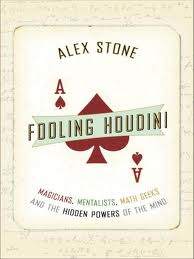Data Visualization and the Science of Magical Thinking
You might be wondering, “What does this usually rational data visualization practitioner mean by the ‘science of magical thinking’?” The magic that I’m referring to is the age-old practice of magicians—professional conjurers, who use sleight of hand, misdirection, and other methods to astound us. The science that I’m referring to is the work that’s being done, primarily by cognitive scientists and neuroscientists, to learn what we can about the brain (perception and cognition) from the techniques that magicians use to fool us. As it turns out, there is a great deal that magicians can teach us. Most magicians don’t understand what goes on in our brains when they misdirect our attention or manipulate perceptual processes to cause us to see something that isn’t there, but by studying their methods scientifically, we can discern those neurological mechanisms and use them for other purposes.
So how does this relate to data visualization? When we use visual representations of information to explore and make sense of it, we do so within the limits of our perceptual and cognitive abilities. When done properly, visualizations and the techniques that we use to interact with them can help us work around the limitations that are built into our brains, thereby augmenting our natural abilities through the use of technology. One critical aspect of this human-computer interaction involves the management of attention, which is extremely limited and easily distracted. The lessons that we can learn from magicians will help us build better tools for data sensemaking that complement and extend our abilities.
I first became aware of the interest of cognitive scientists in the methods of magicians in 2009 when I visited Ron Rensink at the University of British Columbia in Vancouver, Canada. While there, Ron introduced me to his colleague, Gustav Kuhn, who was visiting from Durham University in the UK. At that time, Kuhn was developing a program at Durham University to study the work of magicians. Since that time I’ve discovered that several other cognitive scientists are also doing similar work.
The best overall introduction to this area of study that I’ve read so far is Sleights of Mind: What the Neuroscience of Magic Reveals About Our Everyday Deceptions, by Drs. Stephen L. Macknick and Susana Martinez-Conde, a husband and wife team of neuroscientists at the Barrow Neurological Institute in Phoenix, Arizona.
Their interest in magic has led them to become amateur magicians themselves and to interact with many of the best magicians in the world today. They coined the term “neuromagic” to describe this specific field of study. In the introduction to their book, Macknick and Martinez-Conde explain how their work led them to the study of magic.
We knew as vision scientists that artists have made important discoveries about the visual system for hundreds of years, and visual neuroscience has gained a great deal of knowledge about the brain by studying their techniques and ideas about perception. It was painters rather than scientists who first worked out the rules of visual perspective and occlusion, in order to make pigments on a flat canvas seem like a beautiful landscape rich in depth. We realized now that magicians were just a different kind of artist: instead of form and color, they manipulated attention and cognition.
If you’re interested in learning more about the world of magic and magicians—who are the best, how they train, the extent of their amazing skills, the underworld of grifters and psychics, and how conjurers feel about their secrets being revealed by that masked magician on TV—as well as the lessons that their methods reveal about perception and cognition, I recommend the book Fooling Houdini: Magicians, Mentalists, Math Geeks & the Hidden Powers of the Mind by Alex Stone. As a magician who trained for years to rise through the conjuring ranks, science writer Stone takes us on the fascinating journey of his own experiences from the streets of New York with con men playing Three-card Monte to the inner circle of the Magic Castle, as well as the laboratories of top brain scientists.
Finally, if you want to peek under the hat, the book Magic in Theory: An Introduction to the Theoretical and Psychological Elements of Conjuring by Peter Lamont and Richard Wiseman, who are both professors of psychology and magicians, does a good job of introducing the methods behind all forms of magic.
If you’re like me, any excuse to read about magic and learn some of the mechanics of wonder will do. We love to be fooled by skilled magicians. Trust me when I assure you that a peek behind the curtain won’t change that. While enjoying the mystical journey, you’ll develop an understanding of visual perception and cognition (especially attention) that will increase your skills in data visualization.
Take care,





One Comment on “Data Visualization and the Science of Magical Thinking”
I am doing a presentation on Data Visualization shortly.
I immediately caught on to your interesting point…
“It was painters rather than scientists who first worked out the rules of visual perspective and occlusion, in order to make pigments on a flat canvas seem like a beautiful landscape rich in depth”
Although you go on to say…
We realized now that magicians were just a different kind of artist: instead of form and color, they manipulated attention and cognition.
Unfortunately you did not elaborate an equivalent example as you did for the Artist,,,